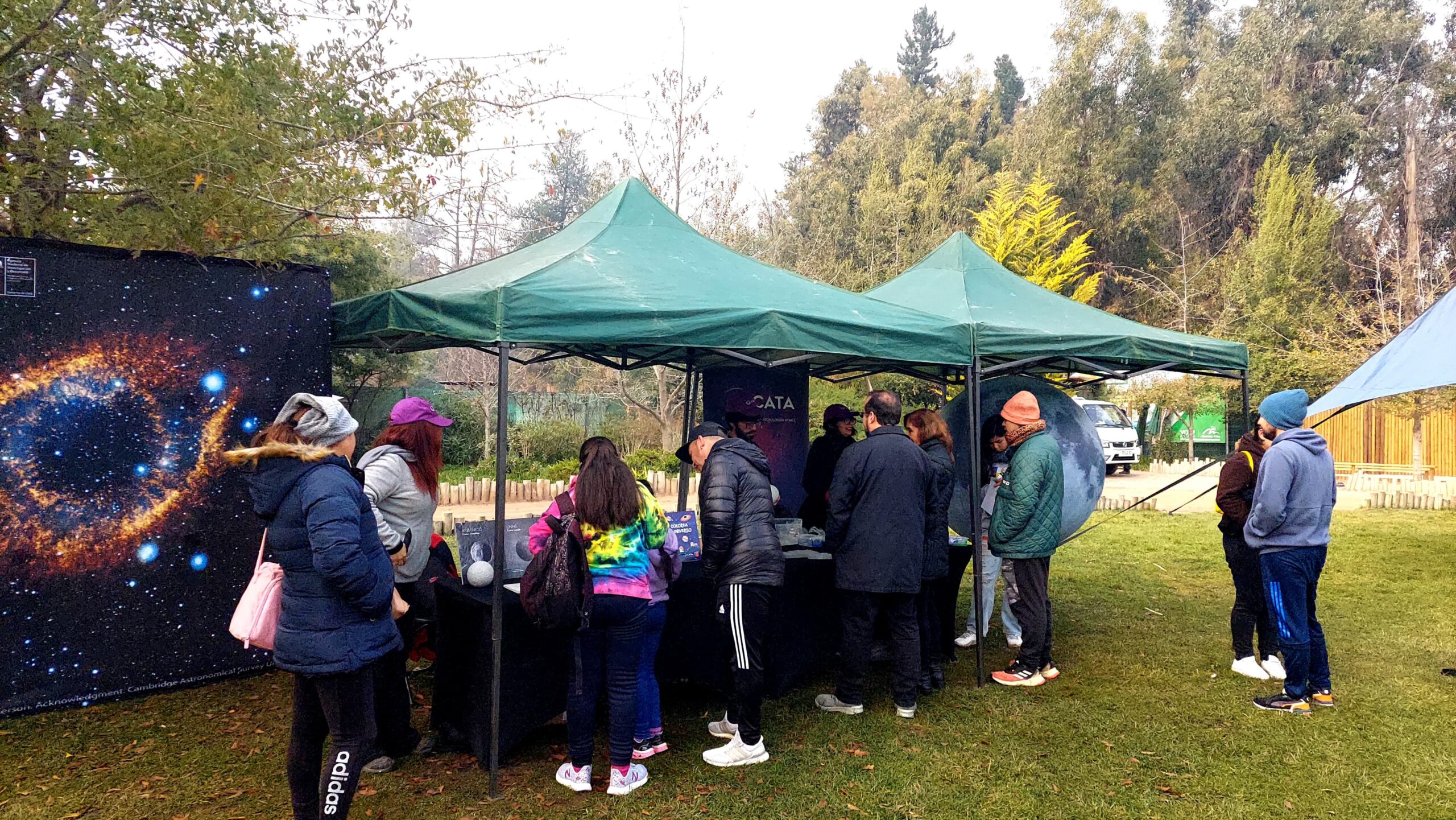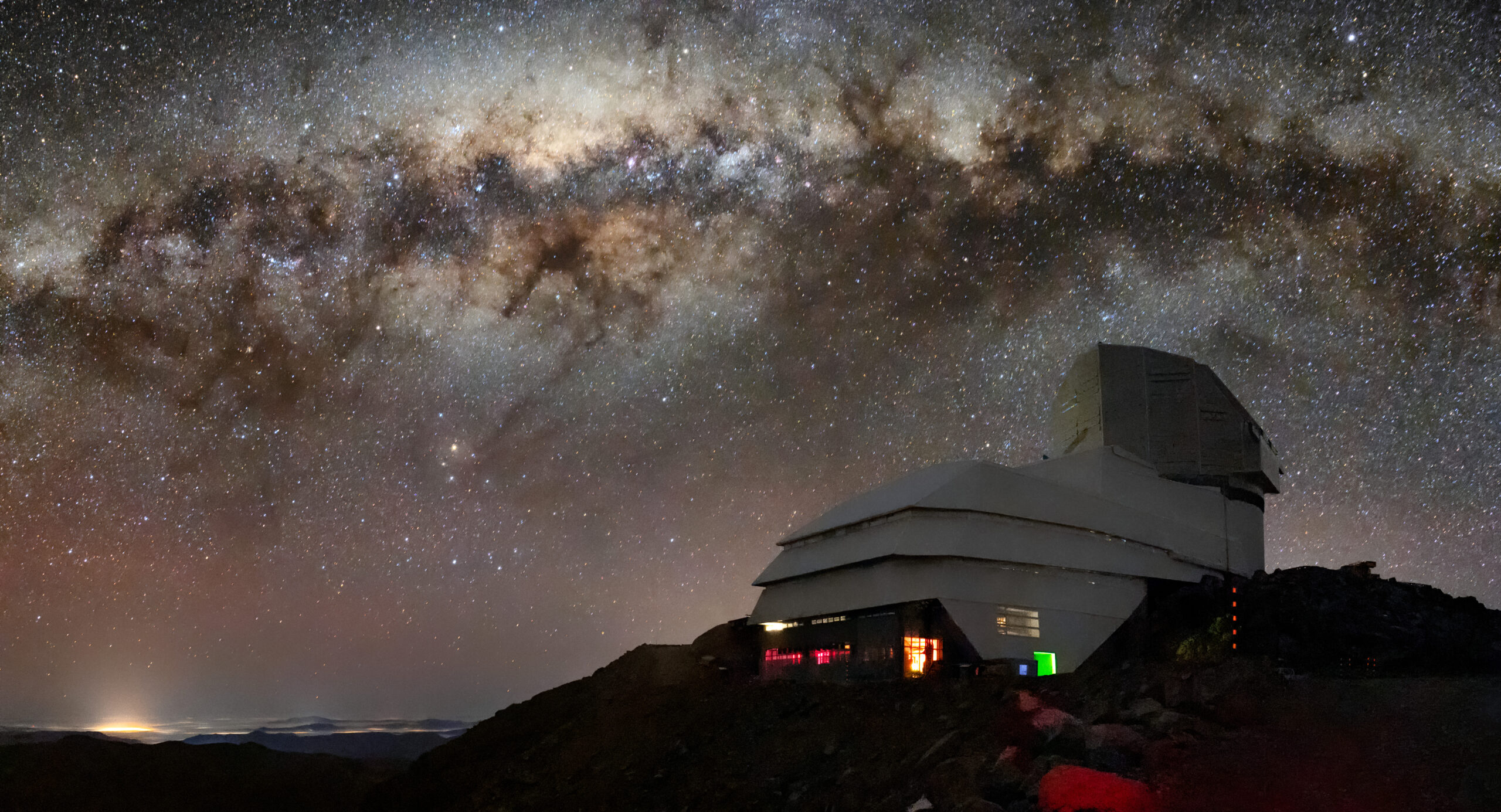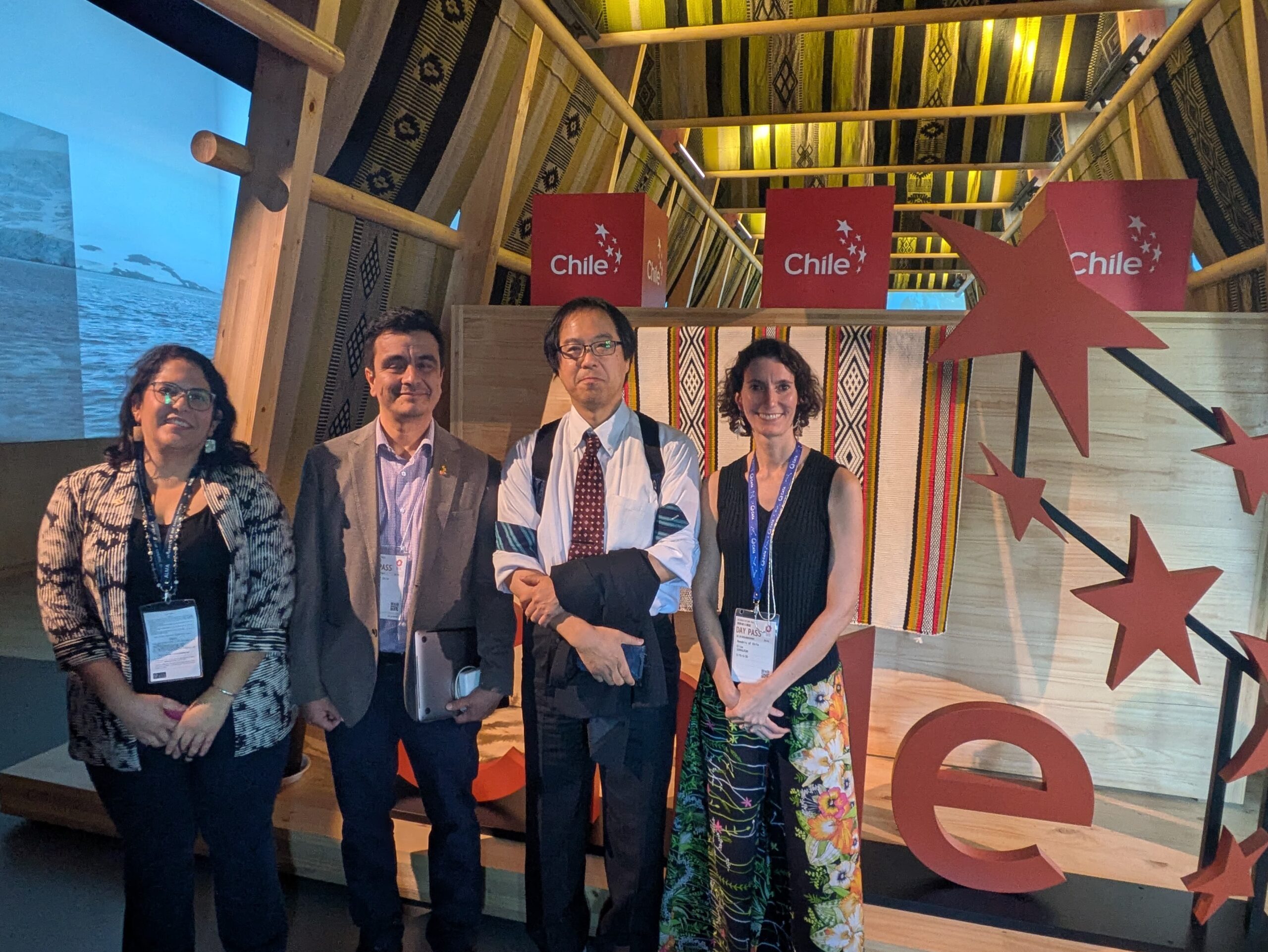
How to have a panoramic vision and interdisciplinary work to advance in research.
CATA's general manager, Elise Servajean, actively participated in the CMM Pucón Symposium, held in Puerto Varas, where researchers and scientists linked to astroinformatics, bioinformatics, digital health and earth sciences exchanged views for better interdisciplinary work.
In recent decades, technological development and research have grown exponentially. This has generated new scenarios and challenges, such as the increasing interrelation between the sciences and their areas of study. Therefore, it is important to generate opportunities for dialogue, discussion and exchange of ideas in these interdisciplinary areas.
It is under this premise that the CMM Pucón Symposium was born in 2009; a meeting that has been held every two years and which, on this occasion, brought together, during three days, more than 50 professionals in Puerto Varas.
Among them was Elise Servajean, general manager of the Center for Astrophysics and Related Technologies, CATA, who gave a talk on “Technology transfer at CATA: from astronomy to industry”. On the occasion, she presented the advances in this area at the Center, the new technologies that are being developed, the pilots that are being carried out and the actions aimed at promoting the link with various industries. In addition, the AstroCluster project was presented, which seeks to strengthen the capabilities of the astronomical industry in Chile, through the development of dual technological solutions that can also be used in other national productive areas.
“Given the interdisciplinary nature of astronomy, it is essential to share knowledge with people from multiple areas and disciplines, to explore new areas of collaboration and learn from other methodologies and problems. Technology transfer from astronomy is an example of how the development of basic science can positively impact society in an applied dimension. From that perspective, sharing achievements and challenges allows us to generate a fruitful discussion of how science can impact society at different levels, and how it can respond to applied challenges that arise directly from industry or the public sector”, commented CATA’s general manager.
The symposium began as a meeting of researchers involved in the area of astroinformatics, analyzing massive amounts of astronomical data, in order to create a community of local researchers who were close to the new problems arising in this area.
Subsequently, sectors close to data science such as bioinformatics, digital health and earth sciences were incorporated. This brought together world-class researchers from diverse technological and scientific disciplines from prestigious research institutions, creating a broad collaborative network dedicated to the analysis of cutting-edge mathematical techniques and trends that have profoundly affected the way we advance frontier knowledge.
“In the development of disciplines there are always common challenges and it is very interesting to see how different groups face them in different ways. The learning from these discussions is undeniable, and it is from this that new opportunities for collaboration with other academic groups or with industry are generated. It is very motivating to see how, every two years, the research groups advance in their projects, and what were once just ideas, are now pilot projects, or even actions that are already seeing positive results. In addition, each version has new actors, making the group enriched and diversified. It will be very interesting to participate in the next version in 2026”, added Elise Servajean.
CATA has a Technology Transfer area, headed by Santiago Prat, which has promoted the downloading of technologies associated with astronomy to be used both in the improvement of production processes and other areas that contribute to society, such as the prevention of natural disasters.
Recent news
-
 Publicado el: 09/07/2025Patricia Tissera is recognized as full professor by the Pontificia Universidad Católica de Chile
Publicado el: 09/07/2025Patricia Tissera is recognized as full professor by the Pontificia Universidad Católica de Chile -
 Publicado el: 04/07/2025CATA researchers among the best in Chile according to international ranking Research.com
Publicado el: 04/07/2025CATA researchers among the best in Chile according to international ranking Research.com -
 Publicado el: 30/06/2025CATA Director strengthens ties in her second institutional tour
Publicado el: 30/06/2025CATA Director strengthens ties in her second institutional tour -
 Publicado el: 30/06/2025CATA celebrated Asteroid Day 2025 at the Pueblito de Las Vizcachas Park
Publicado el: 30/06/2025CATA celebrated Asteroid Day 2025 at the Pueblito de Las Vizcachas Park -
 Publicado el: 26/06/2025Vera C. Rubin: the telescope that watches the sky and anticipates the future of astronomy
Publicado el: 26/06/2025Vera C. Rubin: the telescope that watches the sky and anticipates the future of astronomy
Categories list
- Acknowledgments 20
- Astrobiology 5
- AstroCluster 1
- Black holes 13
- Corporativo 49
- Cosmology 4
- Descubrimientos 19
- Disclosure 46
- Exoplanets 13
- Extension 4
- Galaxies 17
- Galaxies formation 2
- Inter y Transdisciplina 2
- Local Universe 13
- Publications 5
- Sin categorizar 31
- Solar System 11
- Stellar formation 6
- Technology 9
- Technology Transfer 12




